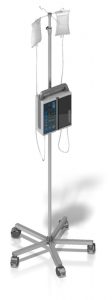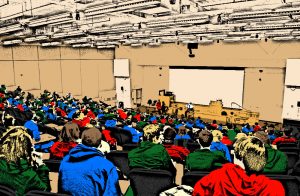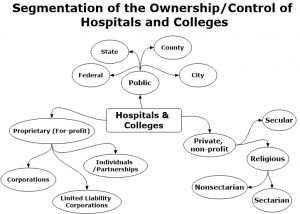
To all those trolls, doubters, and critics out there, I really can read a calendar. I know that December has begun, and we are two weeks beyond the official Thanksgiving holiday.
However, the past several months in our home have been a whirlwind. I didn’t get started on this post until the Monday after Thanksgiving. I am posting it now because I believe it has some great news that I want everyone to know. Thus, I thought it was better to post it late than never.

First, that important news concerns Elaine, my wife of more than a half-century! If you follow me on Twitter or like By’s Musings on Facebook, you know that since early spring, Elaine has been battling a very aggressive Grade 3-B form of non-Hodgkin’s follicular lymphoma. Complicating the issue was the reoccurrence of her previously dormant Type II Diabetes and a brand new anemia case. It took several months, many blood tests, and two biopsies (one needle and one surgical) to diagnose the full extent of her problem.
With the genetic material obtained from the surgical biopsy, her cancer specialists were able to identify the particular DNA of her lymphoma. With this information, they could formulate the proper drug cocktail to terminate this gruesome invader. Her team of doctors selected a mixture that consisted of four killer drugs. Reading the advisory sheets on each of the drugs, I divided them into two separate categories of special forces warriors.

One of the drugs I classified as a sniper. Its job was to seek out follicular-shaped cells and kill only those cells. This drug definitely targets the bad guys. However, unfortunately, follicular cells are also included in certain “good organs” like hair.
The other three drugs were more like machine gunners. Their job was to mow down anything that multiplied rapidly. If it was duplicating itself quickly, these drugs knocked them out. Follicular lymphoma cells multiply extremely rapidly.
This combination of forces is a very lethal and effective combination for almost any battle. Elaine’s doctors selected a potent sniper drug to be the lead combatant in this particular firefight.
In the early stages of her lymphoma, Elaine lost almost 40 pounds. By early summer, she weighed significantly under 100 pounds. Since she was inordinately thin, her doctors didn’t think the veins in her arms could tolerate the required chemotherapy regimen’s multiple infusions. After her first treatment, the doctors suggested a surgically inserted infusion port in her upper chest region get around this.

From early summer to mid-fall, Elaine was scheduled for six rounds of chemotherapy. The first treatment was such a shock to her systems that she ended up in the hospital for a week, with confusion, disorientation, and an extremely high fever. Using IV antibiotics, corticosteroids, and NSAIDS, the doctors were able to control the fever and eliminate the confusion and disorientation to such an extent that, together with the covid protocols imposed by our local hospital, the infusion port could be surgically implanted.
The doctors changed her chemotherapy dosage for the remaining five treatments, and Elaine had no further problems. With each subsequent treatment, more of her blood markers moved into the normal or acceptable ranges. At each step, she showed noticeable improvement.
Elaine’s final scheduled treatment was the week before Halloween. After that infusion, all 32 of her blood markers were in the normal range. Starting with the fourth infusion, she began regaining weight and energy. By early November, her weight was back up in the range of 105 pounds. Thankfully, it has continued to increase to the midteens in early December.
Elaine’s team of doctors scheduled a PET scan the second week of November to see if there was any cancer activity in her lymph glands. One week later, we got the great news that all of her lymph glands were dark on the scan.

The only blip on the radar screen was a glow in her pituitary gland. Her primary oncologist believes this is a harmless, residual effect of the chemotherapy. He said he was extremely pleased to be able to say that Elaine’s cancer was in remission.
However, to do due diligence, he ordered an MRI of the pituitary gland. With the COVID-19 problems in our area, the earliest it could be scheduled is the first week of January. In the meantime, we thank God and rejoice in the results so far. We now must patiently sit and wait until January for the next steps in this journey.

It is easy to be thankful when all is good. However, a quick look at scriptures gives us a different picture of Thanksgiving from God’s view. The verse noted in the opening graphic, I Thessalonians 5:18 tells us that we are to give thanks “in all circumstances.”
The Apostle Paul presents three difficult commands to the church in Thessalonica and modern Christians in the trio of verses, I Thessalonians 5:16-18. In the first century AD, Thessalonica was the cultural, economic, religious, and political center of a large region in Northern Greece. It had a very diverse population of Jews and Gentiles from all over Europe, Asia, Asia Minor, and even Africa.
In this city teeming with multitudes of religions, Paul helped plant a church while visiting it on his second missionary journey. In the I Thessalonians letter, he refers to the congregation as his children. In writing to this fairly young church with a crowd of recent converts, Paul pulls no punches in laying out God’s demands on these children of God. Our heavenly Father has three great expectations and hopes for his children.
Always be joyful. Never stop praying. Be thankful in all circumstances, for this is God’s will for you who belong to Christ Jesus. (I Thessalonians 5:16-18, NLT)

How good are you at multi-tasking? These three commands are heavy-duty obligations. They are definitely not in the same category as using a laptop, tablet, and cell phone. However, when you’re trying to balance all three at one time, how effective are you with any of them? Fortunately, we don’t have to depend upon our own strength to fulfill the three responsibilities God has given us. What God asks us to do, He will help us do. God has promised His assistance and supplied us a Helper in His Holy Spirit.
From the I Thessalonians 5:16-18 passage, what are God’s expectations of His children? They should:
1) Rejoice always
2) Pray without ceasing
3) Give thanks in all circumstances
I began this post with the idea of including an exposition of each of these duties. As I composed the post, it kept getting longer and longer. As an editor once chided me, “You suffer from the dreaded Russian novel syndrome.” Half-way through writing about the third responsibility, I decided to cut bait and divided the post into four reasonably length posts. Thus, installments II thru IV of my 2020 Thanksgiving Message will come out daily over the next three days. Stay tuned for those next segments.

































